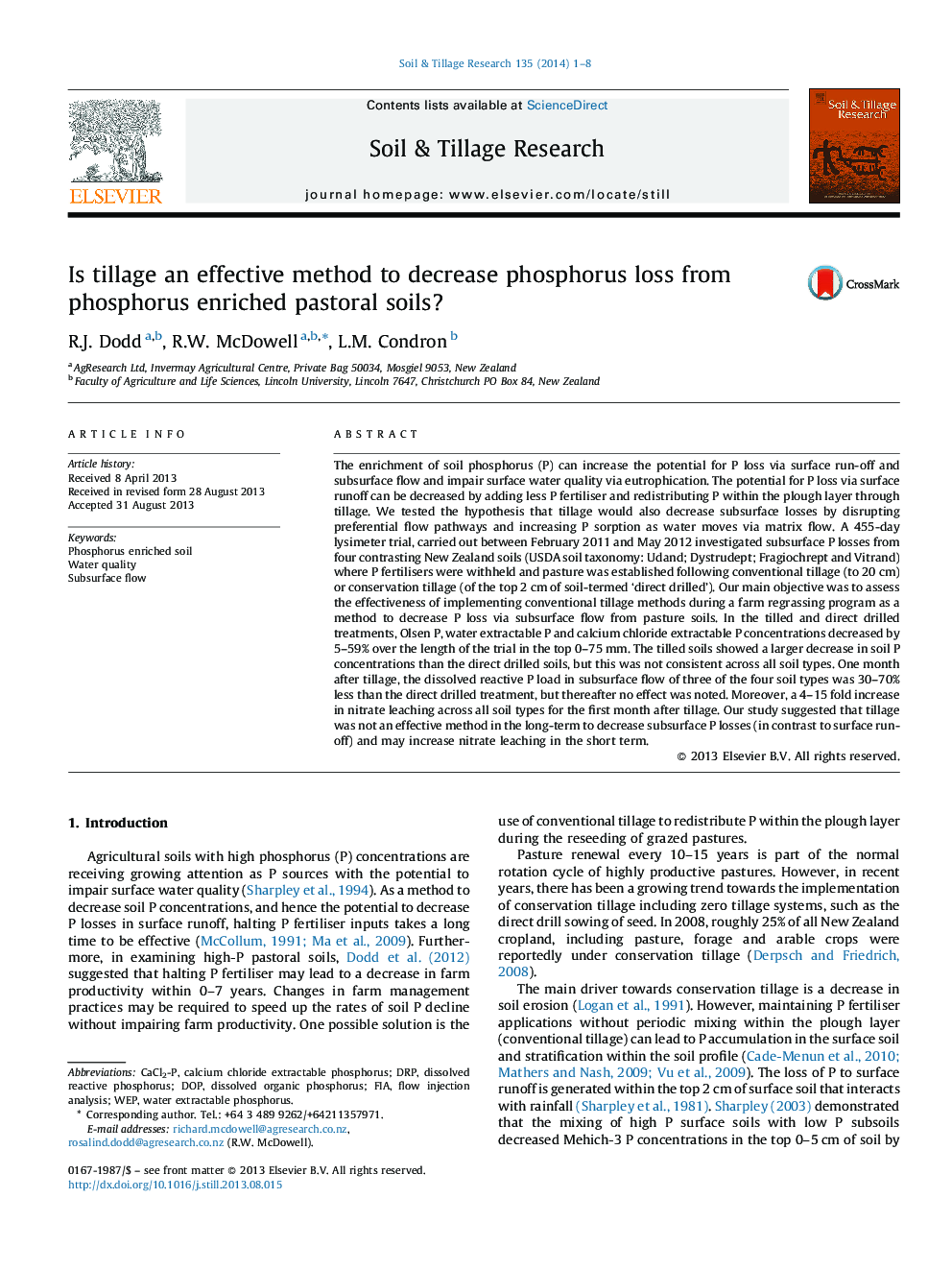| Article ID | Journal | Published Year | Pages | File Type |
|---|---|---|---|---|
| 305821 | Soil and Tillage Research | 2014 | 8 Pages |
•We used a lysimeter trial to study the effect of tillage on P leaching.•Tillage reduced P leaching during the first month of the trial only.•Tillage increased nitrate leaching at the start of the trial.•The study highlighted the importance of preferential flow paths for P leaching.•Conclusion—Tillage is not an effective method to decrease subsurface P loss.
The enrichment of soil phosphorus (P) can increase the potential for P loss via surface run-off and subsurface flow and impair surface water quality via eutrophication. The potential for P loss via surface runoff can be decreased by adding less P fertiliser and redistributing P within the plough layer through tillage. We tested the hypothesis that tillage would also decrease subsurface losses by disrupting preferential flow pathways and increasing P sorption as water moves via matrix flow. A 455-day lysimeter trial, carried out between February 2011 and May 2012 investigated subsurface P losses from four contrasting New Zealand soils (USDA soil taxonomy: Udand; Dystrudept; Fragiochrept and Vitrand) where P fertilisers were withheld and pasture was established following conventional tillage (to 20 cm) or conservation tillage (of the top 2 cm of soil-termed ‘direct drilled’). Our main objective was to assess the effectiveness of implementing conventional tillage methods during a farm regrassing program as a method to decrease P loss via subsurface flow from pasture soils. In the tilled and direct drilled treatments, Olsen P, water extractable P and calcium chloride extractable P concentrations decreased by 5–59% over the length of the trial in the top 0–75 mm. The tilled soils showed a larger decrease in soil P concentrations than the direct drilled soils, but this was not consistent across all soil types. One month after tillage, the dissolved reactive P load in subsurface flow of three of the four soil types was 30–70% less than the direct drilled treatment, but thereafter no effect was noted. Moreover, a 4–15 fold increase in nitrate leaching across all soil types for the first month after tillage. Our study suggested that tillage was not an effective method in the long-term to decrease subsurface P losses (in contrast to surface run-off) and may increase nitrate leaching in the short term.
